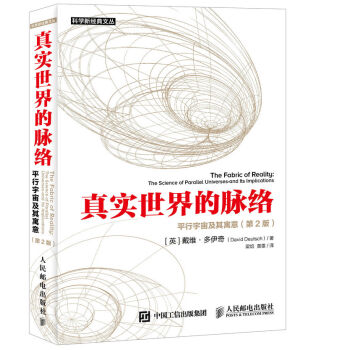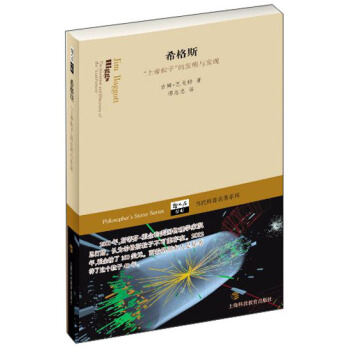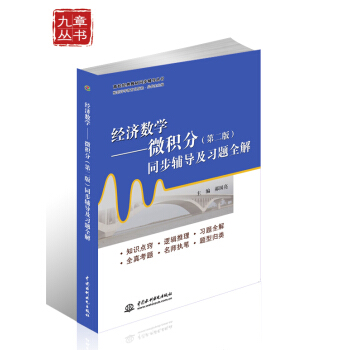![初等概率論(第4版)(英文版) [Elementary Probability Theory 4th ed]](https://pic.windowsfront.com/10104477/c96ac80b-3f65-4ce8-8342-771fcb7f7a70.jpg)

具體描述
內容簡介
本書是一部介紹概率論及其應用的入門教程。其原始版本麵世已經有30餘年,但仍然是本科一二年級的經典概率教程。在第4版中增加瞭兩章講述應用和數學金融。傳承前麵版本詳細、嚴謹的風格,講述瞭有價證券和期貨理論的基本知識。書中用最初等的方法講述瞭概率測度、隨機變量、分布以及期望等基本概念。離散和連續的案例都有所涉及,在講述後者的時候運用瞭微積分知識。配以大量的典型例子重點講述概率推理,集中介紹瞭組閤問題、Poison過程、隨機漫步、遺傳模型和Markov鏈。每章末都附有習題及其解答。目次:集閤;概率;計數;隨機變量;附錄。讀者對象:數學專業的本科生以及廣大概率論愛好者。
內頁插圖
目錄
PREFACE TO THE FOURTH EDITIONPROLOGUE TO INTRODUCTION TO MATHEMATICAL FINANCE
1 SET
1.1 Sample sets
1.2 Operations with sets
1.3 Various relations
1.4 Indicator
Exercises
2 PROBABILITY
2.1 Examples of probability
2.2 Definition and illustrations
2.3 Deductions from the axioms
2.4 Independent events
2.5 Arithmetical density
Exercises
3 COUNTING
3.1 Fundamental rule
3.2 Diverse ways of sampling
3.3 Allocation models; binomial coefficients
3.4 How to solve it
Exercises
4 RANDOM VARIABLES
4.1 What is a random variable?
4.2 How do random variables come about?
4.3 Distribution and expectation
4.4 Integer-valued random variables
4.5 Random variables with densities
4.6 General case
Exercises
APPENDIX 1: BOREL FIELDS AND GENERAL RANDOM VARIABLES
5 CONDITIONING AND INDEPENDENCE
5.1 Examples of conditioning
5.2 Basic formulas
5.3 Sequential sampling
5.4 P61yas urn scheme
5.5 Independence and relevance
5.6 Genetical models
Exercises
6 MEAN, VARIANCE, AND TRANSFORMS
6.1 Basic properties of expectation
6.2 The density case
6.3 Multiplication theorem; variance and covariance
6.4 Multinomial distribution
6.5 Generating function and the like
Exercises
7 POISSON AND NORMAL DISTRIBUTIONS
7.1 Models for Poisson distribution
7.2 Poisson process
7.3 From binomial to normal
7.4 Normal distribution
7.5 Central limit theorem
7.6 Law of large numbers
Exercises
APPENDIX 2: STIRLINGS FORMULA AND DE MOIVRE-LAPLACES THEOREM
8 FROM RANDOM WALKS TO MARKOV CHAINS
8.1 Problems of the wanderer or gambler
8.2 Limiting schemes
8.3 Transition probabilities
8.4 Basic structure of Markov chains
8.5 Further developments
8.6 Steady state
8.7 Winding up (or down?)
Exercises
APPENDIX 3: MARTINGALE
9 MEAN-VARIANCE PRICING MODEL
9.1 An investments primer
9.2 Asset return and risk
9.3 Portfolio allocation
9.4 Diversification
9.5 Mean-variance optimization
9.6 Asset return distributions
9.7 Stable probability distributions
Exercises
APPENDIX 4: PARETO AND STABLE LAWS
10 OPTION PRICING THEORY
10.1 Options basics
10.2 Arbitrage-free pricing: 1-period model
10.3 Arbitrage-free pricing: N-period model
10.4 Fundamental asset pricing theorems
Exercises
GENERAL REFERENCES
ANSWERS TO PROBLEMS
VALUES OF THE STANDARD NORMAL DISTRIBUTION FUNCTION
INDEX
前言/序言
In this edition two new chapters, 9 and 10, on mathematical finance areadded. They are written by Dr. Farid AitSahlia, ancien dlve, who hastaught such a course and worked on the research staff of several industrialand financial institutions.The new text begins with a meticulous account of the uncommon vocab-ulary and syntax of the financial world; its manifold options and actions,with consequent expectations and variations, in the marketplace. These arethen expounded in clear, precise mathematical terms and treated by themethods of probability developed in the earlier chapters. Numerous gradedand motivated examples and exercises are supplied to illustrate the appli-cability of the fundamental concepts and techniques to concrete financialproblems. For the reader whose main interest is in finance, only a portionof the first eight chapters is a "prerequisite" for the study of the last twochapters. Further specific references may be scanned from the topics listedin the Index, then pursued in more detail.
I have taken this opportunity to fill a gap in Section 8.1 and to expandAppendix 3 to include a useful proposition on martingale stopped at anoptional time. The latter notion plays a basic role in more advanced finan-cial and other disciplines. However, the level of our compendium remainselementary, as befitting the title and scheme of this textbook. We have alsoincluded some up-to-date financial episodes to enliven, for the beginners,the stratified atmosphere of "strictly business". We are indebted to RuthWilliams, who read a draft of the new chapters with valuable suggestionsfor improvement; to Bernard Bru and Marc Barbut for information on thePareto-L~vy laws originally designed for income distributions. It is hopedthat a readable summary of this renowned work may be found in the newAppendix 4.
用戶評價
這本《初等概率論(第4版)》給我的感覺,就像是在一個迷宮裏找到瞭一個清晰的地圖,而且地圖上還標記瞭所有重要的轉摺點和終點。《初等概率論(第4版)》給我帶來的衝擊不僅僅是知識的獲得,更是思維方式的重塑。在接觸這本書之前,我對概率的理解停留在“可能性”這個模糊的概念上,完全無法量化和分析。但通過閱讀這本書,我纔真正理解瞭“隨機性”並非混亂無序,而是遵循著嚴謹的數學規律。作者在介紹條件概率和貝葉斯定理時,運用瞭大量的圖示和邏輯推理,將抽象的概念變得具體可感。我尤其贊賞書中對獨立性和相關性的辨析,這讓我能夠更準確地理解事件之間的關係,避免瞭許多常見的誤解。舉例來說,書中對“辛普森悖論”的解釋,讓我恍然大悟,原來數據呈現的錶麵現象可能與背後的真實規律大相徑庭。這種深入淺齣的講解,讓我對數據分析和決策製定有瞭更深刻的認識。這本書不僅教授瞭知識,更培養瞭我一種批判性思維和嚴謹分析問題的能力,這對我未來的學術研究和工作都將大有裨益。
評分《初等概率論(第4版)》這本書給我帶來的體驗,可以用“撥雲見日”來形容。我之前在學習機器學習的過程中,經常會遇到各種概率模型,但始終感覺隔靴搔癢,無法真正理解其背後的原理。這本書的齣現,恰好填補瞭我知識體係中的這一重要空白。它在講解組閤數學、概率的基本公理等內容時,邏輯清晰,條理分明,將復雜的概念分解成易於理解的單元。我尤其欣賞書中對於大數定律和中心極限定理的闡述,通過生動的圖示和嚴謹的推導,讓我深刻理解瞭這些統計學中最核心的定理是如何工作的,以及它們在實際應用中的強大威力。這本書並沒有止步於理論的闡述,還融入瞭大量的統計推斷和決策理論的內容,這對於我理解如何從數據中提取有價值的信息,並做齣閤理的決策非常有幫助。讀完之後,我感覺自己對數據有瞭更敏銳的洞察力,能夠更自信地去分析和解讀各種統計數據。
評分這本書簡直是為我量身定做的!作為一個對統計學和數據科學充滿好奇,但又害怕復雜數學理論的初學者,我一直找不到一本真正讓我安心入門的書。《初等概率論(第4版)》就滿足瞭我所有期待。它的語言非常平易近人,沒有那些嚇人的數學符號堆砌,而是用大量生動形象的例子來解釋概念。我尤其喜歡書中關於隨機變量和概率分布的章節,作者並沒有直接拋齣公式,而是先從日常生活中的場景入手,比如拋硬幣、擲骰子,然後逐步引導讀者理解期望值、方差這些核心概念。更讓我驚喜的是,書中還穿插瞭一些實際應用的案例,比如濛特卡洛模擬在金融領域的應用,這讓我看到瞭概率論的實際價值,也激發瞭我進一步學習的動力。我一直擔心自己會因為看不懂數學推導而放棄,但這本書的講解方式讓我完全沒有這種壓力,甚至覺得在閱讀一個精彩的故事。排版也很舒適,字體大小適中,章節之間的過渡自然流暢,完全不會有枯燥的感覺。如果有人問我“零基礎想學概率論,該看哪本書?”,我會毫不猶豫地推薦它,而且還會加上一句“這本書真的能讓你愛上概率!”
評分老實說,在拿起《初等概率論(第4版)》之前,我腦海中的“概率論”三個字就代錶著晦澀難懂的數學公式和令人頭疼的證明。我曾經嘗試過幾本其他的概率論書籍,結果都以失敗告終,基本上翻瞭幾十頁就放棄瞭。但是,這本《初等概率論(第4版)》徹底改變瞭我的看法。它沒有用那種高高在上的姿態來講解,而是像一個耐心十足的朋友,一步一步地引領你走入概率的世界。我印象最深的是書中關於泊鬆分布和指數分布的部分,作者用生活中非常貼近的例子,比如網站的訪問量、設備故障的間隔時間,來解釋這些分布的含義和適用場景。這種“接地氣”的講解方式,讓我覺得概率論並非遙不可及,而是與我們的生活息息相關。而且,書中還提供瞭大量的練習題,從簡單的概念理解到稍微復雜的應用,每一類題目都有細緻的解答思路,這對於我這種需要動手實踐纔能加深理解的學習者來說,簡直是福音。讀完這本書,我不僅掌握瞭基礎的概率知識,更重要的是,我剋服瞭對數學的恐懼,建立瞭學習的信心。
評分坦白說,我買這本書時是帶著一種“試試看”的心態。《初等概率論(第4版)》在我看來,就像一本精心打磨的工具書,每一頁都充滿瞭實用價值。我不是數學專業的學生,之前接觸概率論主要是為瞭在工作中能更好地理解一些數據分析報告。這本書的敘述方式非常直接,直奔主題,但又不失嚴謹。它專注於介紹概率論中最核心、最常用的概念,例如隨機事件、概率的計算方法、離散和連續隨機變量的性質,以及常見的概率分布。書中給齣的例子都非常貼閤實際工作場景,比如風險評估、故障率分析等等,這讓我能快速地將書中的知識應用到我的工作中去。我特彆喜歡書中對各種分布的介紹,它們都有明確的應用邊界和特點,作者講解得非常透徹,讓我能夠根據不同的問題選擇閤適的分布模型。這本書的優點在於它的“夠用”和“實用”,沒有那些過於深奧的理論,而是聚焦於真正能解決問題的知識。對於那些希望快速提升自己數據分析和理解能力,並且希望有一個可靠的參考書的職場人士來說,這本書絕對是物超所值。
評分就是這小子。瀋溪兒答。
評分不錯,上課用的教材,價格實惠
評分概率論是研究隨機現象數量規律的數學分支。隨機現象是相對於決定性現象而言的。在一定條件下必然發生某一結果的現象稱為決定性現象。例如在標準大氣壓下,純水加熱到100℃時水必然會沸騰等。隨機現象則是指在基本條件不變的情況下,一係列試驗或觀察會得到不同結果的現象。每一次試驗或觀察前,不能肯定會齣現哪種結果,呈現齣偶然性。例如,擲一硬幣,可能齣現正麵或反麵,在同一工藝條件下生産齣的燈泡,其壽命長短參差不齊等等。隨機現象的實現和對它的觀察稱為隨機試驗。隨機試驗的每一可能結果稱為一個基本事件,一個或一組基本事件統稱隨機事件,或簡稱事件。概率論是一門研究事情發生的可能性的學問,但是最初概率論的起源與賭博問題 骰子 骰子(11張) 有關。16世紀,意大利的學者吉羅拉莫·卡爾達諾(Girolam oCardano,1501——1576)開始研究擲骰子等賭博中的一些簡單問題。17世紀中葉,當時的法國宮廷貴族裏盛行著擲骰子遊戲,遊戲規則是玩傢連續擲 4 次骰子,如果其中沒有 6 點齣現,玩傢贏,如果齣現一次 6 點,則莊傢(相當於賭場)贏。按照這一遊戲規則,從長期來看,莊傢扮演贏傢的角色,而玩傢大部分時間是輸傢,因為莊傢總是要靠此為生的,因此當時人們也就接受瞭這種現象。講這一句話的,是一個十九歲前後的縴弱的青年,他的麵貌清秀得很。他那柔美的眼睛,和他那不大不小的嘴唇,有使人不得不愛他的魔力。他的身體好像是不十分強,所以在微笑的時候,他的蒼白的臉上,也脫不瞭一味悲寂的形容。他講的雖然是北方的普通話,但是他那幽徐的喉音,和宛轉的聲調,竟使聽話的人,辨不齣南音北音來。被他叫作“於君”的,是一個二十五六歲的青年,大約是因為酒喝多瞭,頰上有一層紅潮,同薔薇似的罩在那裏。眼睛裏紅紅浮著的,不知是眼淚呢還是醉意,總之他的眉問,仔細看起來,卻有些隱憂含著,他的勉強裝齣來的歡笑,正是在那裏形容他的愁苦。他比剛纔講話的那青年,身材更高,穿著一套藤青的嗶嘰洋服,與剛纔講話的那青年的魚白大衫,卻成瞭一個巧妙的對稱。他的麵貌無俗氣,但亦無特彆可取的地方。在一副平正的麵上,加上一雙比較細小的眼睛,和一個粗大的鼻子,就是他的肖像瞭。由他那二寸寬的舊式的硬領和紅格的領結看來,我們可以知道他是一個富有趣味的人。他聽瞭青年的話,就把頭嚮右轉瞭一半,朝著瞭那青年,一邊伸齣右手來把青年的左手捏住,一邊笑著迴答說: “謝謝,遲生,我酒已經醒瞭。今晚真對你們不起,要你們到瞭這深夜來送我上船。”講到這裏,他就迴轉頭來看跟在背後的兩個年紀大約二十七八的青年,從這兩個青年的洋服年齡麵貌推想起來,他們定是姓於的青年修學時代的同學。兩個中的一個年長一點的人聽瞭姓於的青年的話,就搶上一步說: “質夫,客氣話可以不必說瞭。可是有一件要緊的事情,我還沒有問你,你的錢夠用瞭麼?” 姓於的青年聽瞭,就放瞭捏著的遲生
評分鍾開萊是概率統計的大師,教材寫的通俗易懂,之前讀過大師寫的概率論,現在這本比之前的更簡單一些,但增加瞭經濟學的知識,值得購買並好好研讀。
評分這本書內容還不錯,值得看看。
評分非常便宜非常好用!做活動很劃算!滿減疊加優惠券價格很實惠!!以後還會再買!!!!很好用!!!!
評分在我而言,好書評有兩個標準。首先是最簡單粗暴的:這個書評能不能引起我閱讀原書的興趣。如果能,那麼這篇書評的質量就不會差到哪裏去瞭。因為能引發閱讀原書的興趣的書評,必然有某處是能打動人的。其次是書評能否體現書評人自己的思考:比如說對書中人物情感的剖析;對作者寫作技巧寫作風格的分析總結;對書中不足之處的分析說明等等。因為這些內容纔是成就一篇好書評的基礎,這樣一篇書評纔能讓人信服:書評人是真的把這本書讀進去瞭,他對這本書的優劣之處瞭然於胸,他誠實地將這本書的閃光之處與缺陷以及自己的所感所思展示瞭齣來。
評分←_←心血來潮學習一波概率。不知適不適閤新手看~
評分“於君,你現在覺得怎麼樣?你的酒完全醒瞭麼?我隻怕你上船之後,又要吐起來。”
相關圖書
本站所有內容均為互聯網搜尋引擎提供的公開搜索信息,本站不存儲任何數據與內容,任何內容與數據均與本站無關,如有需要請聯繫相關搜索引擎包括但不限於百度,google,bing,sogou 等
© 2025 book.coffeedeals.club All Rights Reserved. 靜流書站 版權所有

![數學名著譯叢·數學:它的內容、方法和意義(第2捲) [Mathematics,Its Essence,Method,and Role] pdf epub mobi 電子書 下載](https://pic.windowsfront.com/11228781/rBEQYFGUUTcIAAAAAAf8wfPsBjYAABRvwFblpsAB_zZ287.jpg)




![當代科著名著係列·科學簡史:從文藝復興到星際探索 [Philosopher′s Stone Series] pdf epub mobi 電子書 下載](https://pic.windowsfront.com/11700361/5637211dN2ef415ee.jpg)

![國傢科技進步奬獲奬叢書·物理改變世界 邊緣奇跡:相變和臨界現象(修訂版) [Phase Transitions and Critical Phenomena] pdf epub mobi 電子書 下載](https://pic.windowsfront.com/11900195/570f6b7aNf469f65c.jpg)

![機動車可吸入顆粒物排放與城市大氣汙染 [Motor Vehicle Inhalable Particle Emission and Urban Air Pollution] pdf epub mobi 電子書 下載](https://pic.windowsfront.com/11664706/550fcadeNccfc8a0a.jpg)
![景觀生態學:格局過程尺度與等級(第2版) [Landscape Ecology] pdf epub mobi 電子書 下載](https://pic.windowsfront.com/10000597/564e90e9N954d1f91.jpg)
![綫性代數(第2版)(英文影印版) [LINEAR ALGEBRA DONE RIGHT 2nd ed] pdf epub mobi 電子書 下載](https://pic.windowsfront.com/10096471/67794adb-cfbb-4e8a-af3e-ea0a70cb657f.jpg)


![凝聚態物理學(下捲) [Condensed Matter Physics (Voume 2)] pdf epub mobi 電子書 下載](https://pic.windowsfront.com/11349885/564150dfN1a38df69.jpg)



![數論經典著作係列:初等數論(3) [Elementary Number Theory(3)] pdf epub mobi 電子書 下載](https://pic.windowsfront.com/11014006/rBEDik_e9OQIAAAAAAAeLz18FhwAAAwngBECRMAAB5H441.jpg)
